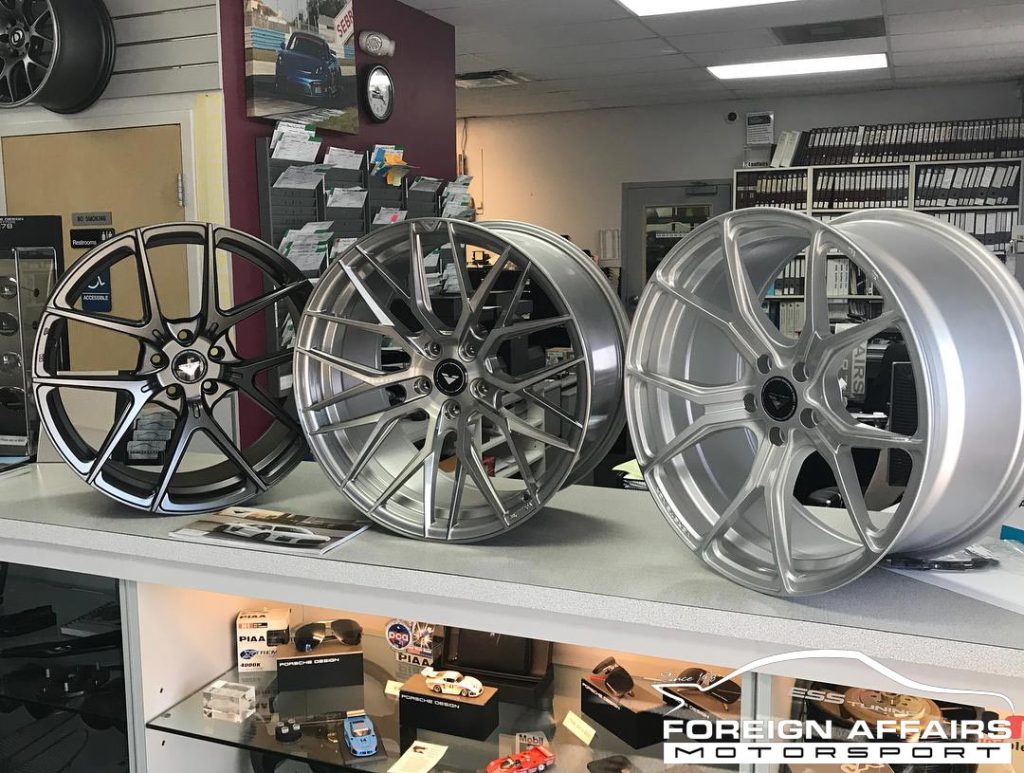Choose The Right Wheels And Tires With Our Performance Shop Pros

When in the performance shop, one of the largest things looked over on the vehicles that come through are the rims and tires. Changing your wheel on your vehicle can change the basic characteristics of your vehicle, from improving the aesthetics, create a smoother ride, and even improve acceleration and handling. Let’s look at what is important to know when you are considering a wheel change
Rims, Tires and Wheels
The first bit of terminology to familiarize yourself with is the difference between a wheel, a tire and a rim. The rim is the metal part that physically attaches to the vehicle by lug nuts or lug bolts. The rim is designed to support tire and help create an airtight seal. The tire is the black rubber that makes contact with the road and has a tread pattern. When we refer to the wheel, we are talking about the combination of rim and tire.
Correct Fitment Of Rims
When choosing a rim, the first thing you want to look at is bolt pattern. Most German vehicles, such as Porsche and BMW, use a 5-bolt pattern, with each bolt being 120mm (4.7 inches) from the wheels center. This configuration is often labeled as a 5×120 rim. Width is measured from front facing bead seat, the edge of the rim that helps create an airtight seal with the tire, to the second bead seat on the rear of the rim and is traditionally measured in millimeters. Choosing a width that is too narrow, may leave your car struggling for grip, whilst choosing a width that is too wide, may impede on your car’s steering, causing the wheel to rub against the inner fender whilst driving or lead to the wheel interfering with other suspension components.
The diameter of the rim is the next measurement to consider and is measured in inches. The diameter is the length from one edge of the rim, to the other across the face of the rim and through the center point of the rim. The diameter of the rim needs to be large enough to clear your vehicle’s brake calipers, one thing to consider when choosing rim diameter, is the tire’s aspect ratio. The aspect ratio is a percentage which is calculated by taking the sidewall height, divided by the tire width. When choosing a rim diameter, you need to ensure you compliment it with an aspect ratio and tire profile that will ensure the wheel does not make contact with any part of the cars body, especially when the car is experiencing a load.
Reading The Sidewall
On all tires, the sidewall is marked with all the important information regarding the tire. If we look at the front wheel of a 911 GT3, its sidewall reads P245/35R20. This reads as P, which states the type of tire and in the case is performance. 245 is the tire width in millimeters, 35 is the tires aspect ratio, R is for what the tire’s intended use is, being road, and 20 is the rim diameter, in this case being 20 inches.
Choosing Wheels For Performance
When looking at improving performance, it’s important to consider tire width, diameter, and the weight of the wheel. A large diameter rim, leads to a low-profile tire being fitted. A lower profile tire has a smaller sidewall, and the smaller the sidewall, the less it flexes and warps under heavy acceleration and cornering. The decrease in this flex leads to a more responsive car, with improved stability and better cornering. The downside of a lower profile is that you do receive more feedback from the road, which will make you feel every bump and crack in the road more. Smaller profile tires also tend to have a shorter lifespan.
Putting a larger width tire on your drive wheels can aid acceleration, as you have a larger surface area making contact with the road. This larger surface area improves grip, which can help reduce tire spin when accelerating. Acceleration is also affected by the wheels weight. A heavier wheel requires more force to get them to start or to stop rolling. At Foreign Affairs Motorsport we highly recommend Apex rims to anyone looking to increase performance. Apex uses rotary forging when creating their rims, which creates rims that are strong enough to handle any amount of power put through them but are also incredibly lightweight. Lightweight rims also improve the handling of the car, by creating less strain on the steering system.
Choosing Wheels For A Smooth Ride
To achieve the smoothest ride, look for the combination of smallest possible rim diameter, with the largest aspect ratio. By increasing the sidewall height, you increase the amount of flex in the tire, and increase how much the tire can absorb, which decreases how much feedback you receive from the road.
In areas with poorly maintained roads, a larger profile tire has the benefit of protecting the rim from damage caused by potholes. When considering a smaller rim, it is vital to remember that the rim needs to clear the brake caliper of drums of your vehicle.
Once you have chosen a rim and tire combination we recommend you always test fit your new wheels, remembering that just because a wheel fits the front of your vehicle does not necessarily mean it will fit the rear. For all your custom rim and tire needs, or if you have any questions regarding your vehicle and your options with custom wheels, we at Foreign Affairs Motorsport will be happy to help.



